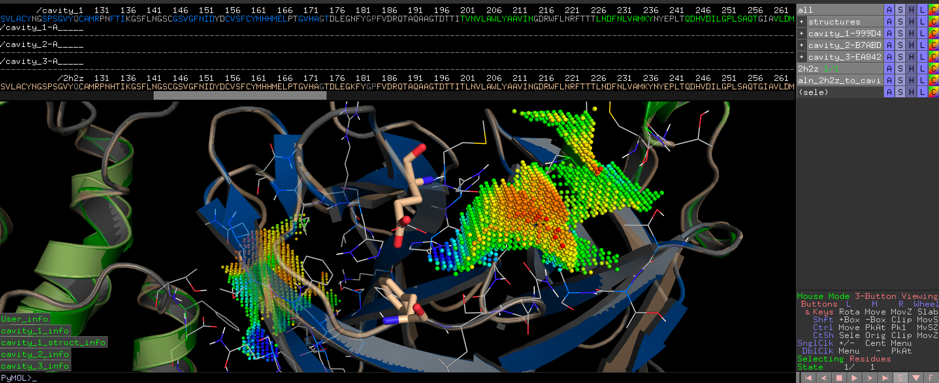BREAKING NEWS! Latest Coronavirus Research On SARS-CoV-2 Genome Reveals Its Recombinant Origin and Differences Between Other Coronaviruses
Source: Thailand Medical News Feb 17, 2020 5 years, 10 months, 1 week, 6 days, 22 hours, 1 minute ago
Latest Coronavirus research study by
genomic researchers from Peking Union Medical College in China has revealed that the
genome of new
SARS-Cov-2 coronavirus that causes the Covid-19 disease has 380 amino acid substitutions when compared to the genome of the original SARS-CoV. (
note that the SARS-CoV-2 if the official name of the novel 2019-nCoV virus)

Furthermore it was discovered that there are only 5 nucleotide differences when the
genomes of the new
coronavirus was compared with the
genomes of the bat SARS-like
coronaviruses, human SARS
coronaviruses, and human Middle East respiratory syndrome
coronaviruses (MERS-CoV)
The study which was published in Cell Host & Microbe journal involved the
genomic scientists annotating three
SARS-CoV-2 genomes and identifying both differences and similarities compared with other
genomes, including that of severe acute respiratory syndrome (SARS)
coronavirus.
The researchers had hoped that by identifying the protein differences, it may lead to some clues as to what may be that are allowing this new
coronavirus virus to be so virulent and transmissible in humans.”
To date, (as of January 22
nd) there are 14
genome sequences for
SARS-CoV-2 that had been released by six different labs that are available to researchers through either the National Center for Biotechnology Information’s Genbank or the Global Initiative on Sharing All Influenza Data (GISAID).
Though some past
research has done certain preliminary phylogenetic analysis and annotation, this research findings is one of the first detailed analysis of these
genomes.
Computational biologist and lead researcher, Dr Taijiao Jiang and his colleagues wanted to discover insights into the molecular mechanisms underlying the functionality and pathogenesis of the new
SARS-CoV-2 coronavirus.
The research team annotated three
genomes of
SARS-CoV-2, which were sequenced from samples collected on December 30 and January 1 by the National Institute for Viral Disease Control and Prevention, part of the Chinese CDC and are available through GISAID.
They then made cross comparisons between the new
coronavirus and bat SARS-like
coronaviruses, human SARS
coronaviruses, and human Middle East respiratory syndrome
coronaviruses (MERS-CoV).
The
genomic researchers discovered that there were only five nucleotide differences in a total genome of about 29,800 nucleotides among
the three
SARS-Cov-2 genomes. They also identified 14 open reading frames, predicted to encode 27 proteins, including four structural and eight accessory proteins.
Past
coronavirus research indicates that accessory proteins may mediate the host response to the virus, which can affect pathogenicity, and may make up part of the viral particle.
As the team identified just five nucleotide differences among the
genomes, it’s unlikely that there are any significant changes between the viruses that affect their pathogenicity or transmissibility.
However it must be noted that it takes is one change to affect the pathogenicity and virulence of the virus and whether these nucleotide differences mean anything functionally for the viruses will be need further detailed research.
Dr Jiang and his team noted differences in the amino acid sequences of SARS-CoV and
SARS-CoV-2. For instance, one SARS-CoV accessory protein, known as 8a, is absent in the new
coronavirus. Other accessory proteins varied in length.
In the new
SARS-CoV-2 virus, 8b is 37 amino acids longer than in SARS-CoV while 3b is shorter by 132 amino acids.
Typically, the structural proteins are very highly conserved between all
coronaviruses, whereas accessory proteins are generally unique to each specific group of
coronaviruses.
It is generally thought that the amino acid sequences show “the connection of this virus to the SARS-like
coronaviruses and a little bit more distant relationship to SARS
coronavirus.”
The
genomic scientists determined that the new
SARS-CoV-2 virus is most closely related to bat SARS-like
coronaviruses, from which SARS-CoV evolved, and more distantly related to MERS
coronaviruses.
However, they did not find a single bat SARS-like
coronavirus in which all the proteins were most similar to those of the new
coronavirus.
It was observed that some the
SARS-CoV-2 proteins are more similar to those of bat SARS-like
coronaviruses, while accessory proteins 3a and 8b are most similar to the SARS-CoVs.
Dr Jiang added that the study of
genome data of
SARS-CoV-2 together with other
coronaviruses indicates that, although this new virus has high sequence similarity to SARS virus, it belongs to distinct phylogenetic branches and was derived from SARS-like virus isolated in bat.
The
genomic researchers acknowledged in the study findings that, given the limited knowledge of the new
SARS-CoV-2 coronavirus, it is difficult to infer the functional significance of the 380 amino acid substitutions they found between
SARS-CoV-2 and the SARS and SARS-like CoVs.
Dr Jiang told
Thailand Medical News, “The details, as well as figuring out how the new
coronavirus has mutated and adapted over its short history in humans, will be the focus of our next
research.”
He further added, “Everyone has been l wondering where this
coronavirus originated from, and we can see from the new sequence and the sequences that we’ve already had for
coronaviruses that it’s likely to be a recombinant of a number of different
coronaviruses that are known.”
Reference : A. Wu et al., “Genome composition and divergence of the novel coronavirus (2019-nCoV) originating in China,” Cell Host & Microbe, doi:10.1016/j.chom.2020.02.001, 2020.
For more about the
Latest Coronavirus Research, check out :
https://www.thailandmedical.news/articles/coronavirus
